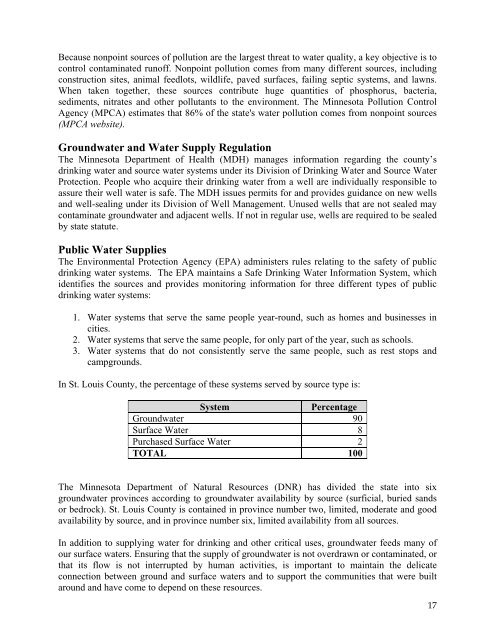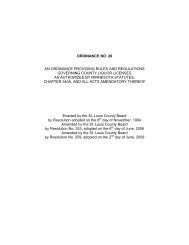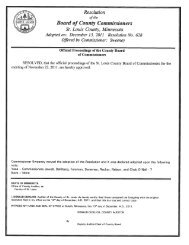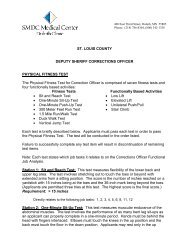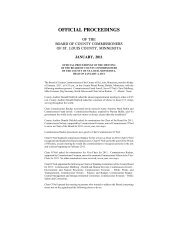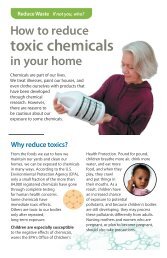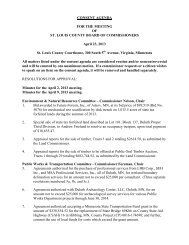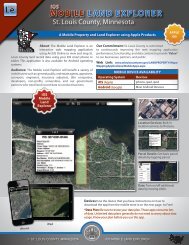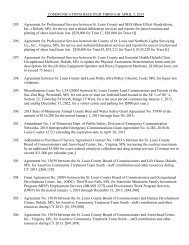Comprehensive Water Management Plan - St. Louis County
Comprehensive Water Management Plan - St. Louis County
Comprehensive Water Management Plan - St. Louis County
Create successful ePaper yourself
Turn your PDF publications into a flip-book with our unique Google optimized e-Paper software.
Because nonpoint sources of pollution are the largest threat to water quality, a key objective is tocontrol contaminated runoff. Nonpoint pollution comes from many different sources, includingconstruction sites, animal feedlots, wildlife, paved surfaces, failing septic systems, and lawns.When taken together, these sources contribute huge quantities of phosphorus, bacteria,sediments, nitrates and other pollutants to the environment. The Minnesota Pollution ControlAgency (MPCA) estimates that 86% of the state's water pollution comes from nonpoint sources(MPCA website).Groundwater and <strong>Water</strong> Supply RegulationThe Minnesota Department of Health (MDH) manages information regarding the county’sdrinking water and source water systems under its Division of Drinking <strong>Water</strong> and Source <strong>Water</strong>Protection. People who acquire their drinking water from a well are individually responsible toassure their well water is safe. The MDH issues permits for and provides guidance on new wellsand well-sealing under its Division of Well <strong>Management</strong>. Unused wells that are not sealed maycontaminate groundwater and adjacent wells. If not in regular use, wells are required to be sealedby state statute.Public <strong>Water</strong> SuppliesThe Environmental Protection Agency (EPA) administers rules relating to the safety of publicdrinking water systems. The EPA maintains a Safe Drinking <strong>Water</strong> Information System, whichidentifies the sources and provides monitoring information for three different types of publicdrinking water systems:1. <strong>Water</strong> systems that serve the same people year-round, such as homes and businesses incities.2. <strong>Water</strong> systems that serve the same people, for only part of the year, such as schools.3. <strong>Water</strong> systems that do not consistently serve the same people, such as rest stops andcampgrounds.In <strong>St</strong>. <strong>Louis</strong> <strong>County</strong>, the percentage of these systems served by source type is:SystemPercentageGroundwater 90Surface <strong>Water</strong> 8Purchased Surface <strong>Water</strong> 2TOTAL 100The Minnesota Department of Natural Resources (DNR) has divided the state into sixgroundwater provinces according to groundwater availability by source (surficial, buried sandsor bedrock). <strong>St</strong>. <strong>Louis</strong> <strong>County</strong> is contained in province number two, limited, moderate and goodavailability by source, and in province number six, limited availability from all sources.In addition to supplying water for drinking and other critical uses, groundwater feeds many ofour surface waters. Ensuring that the supply of groundwater is not overdrawn or contaminated, orthat its flow is not interrupted by human activities, is important to maintain the delicateconnection between ground and surface waters and to support the communities that were builtaround and have come to depend on these resources.17


